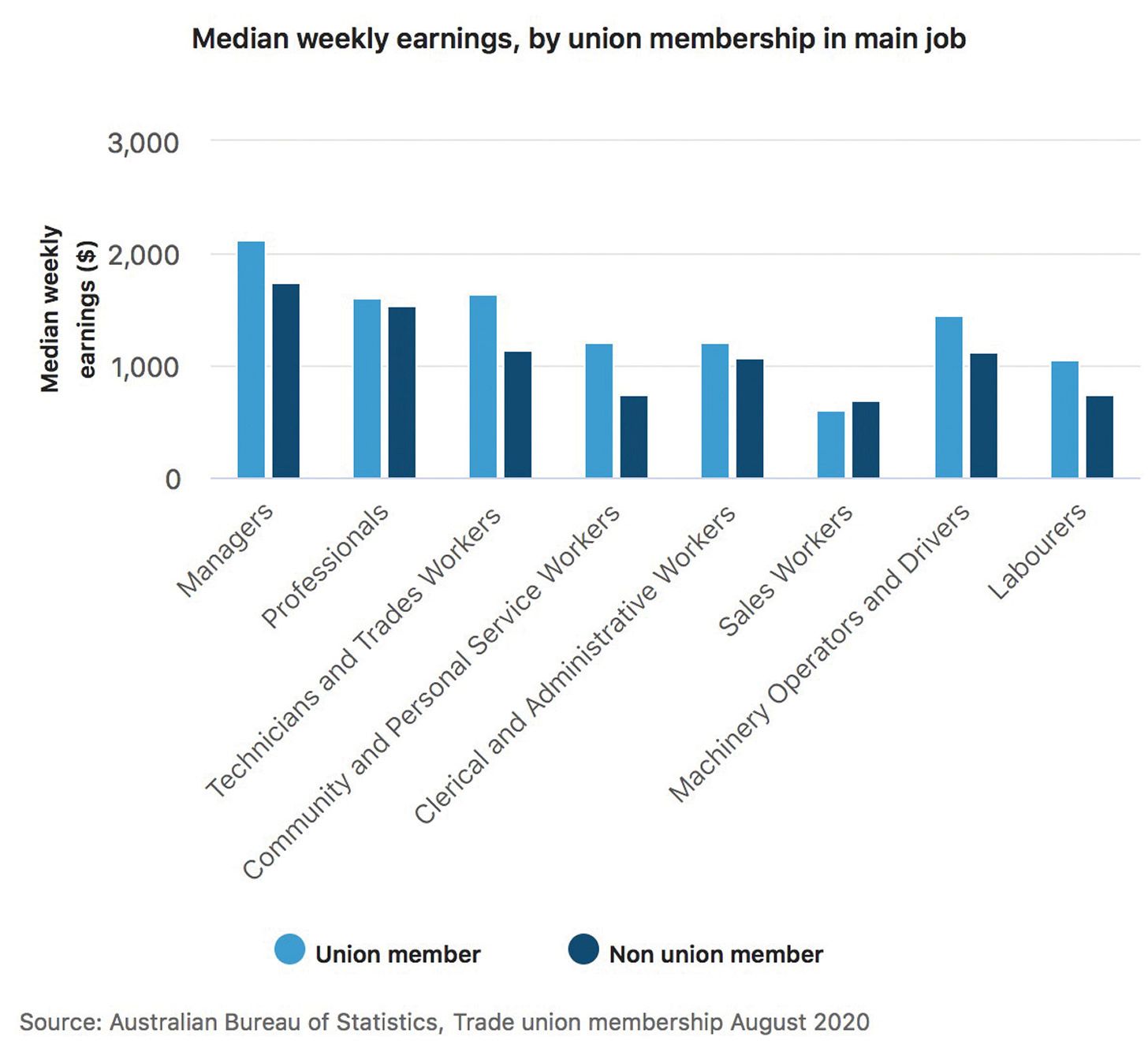Numbers don’t lie: Here’s why union membership is good for you.
The latest data from the Australian Bureau of Statistics (ABS) shows that it pays to belong to a trade union.
The good news
Across all professions and levels, from management to labourers, median weekly earnings for employees who are trade union members in their main job were $1450 per week, compared with $1100 for employees who were not in a union (see table).
These ABS stats also show that the typical trade unionist is female, professional and degree qualified. Women now make up a greater proportion of trade union members (55 percent) than men.
Teaching and education is the mostly highly unionised profession, with membership at 31 percent. Union membership is at its lowest – 10 percent – among people with non-school qualifications.
The greatest proportion of union members is among professionals, who make up 21 percent of union membership. The next two biggest groups are community and personal service workers at 18 percent and machinery operators and drivers at 17 percent.
Of trade union members, only 8 percent are casuals.








































































































































